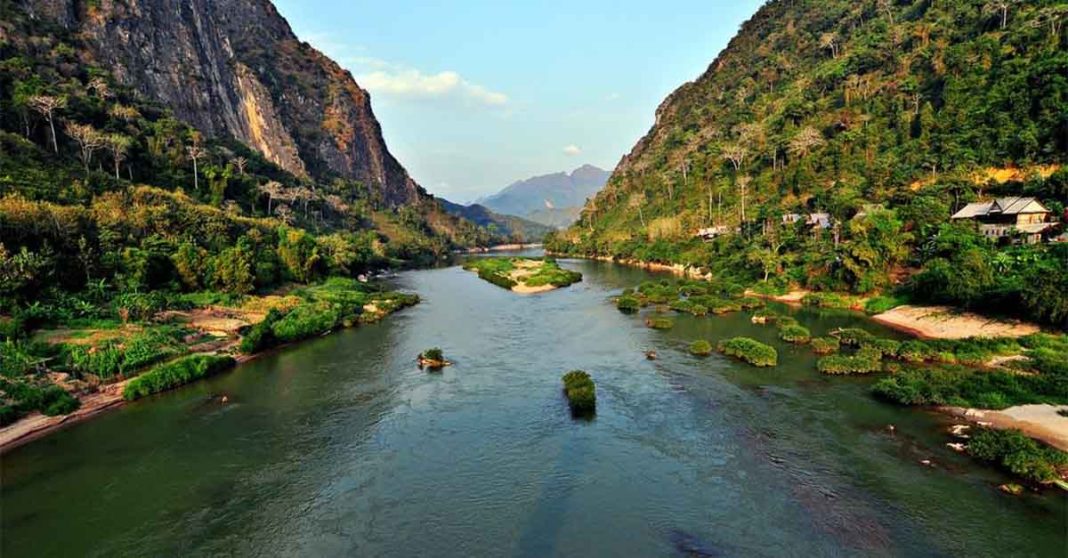In the heart of Southeast Asia, Laos quietly emerges as a tranquil alternative to bustling tourism destinations that often steal the spotlight.
As travelers seek a more authentic travel experience, the new concept of “dispersed tourism” is growing more and more popular across the region.
This new trend involves traveling to less popular sites, particularly in rural areas, where the beauty of nature becomes the main selling point. In southern Laos, for instance, the archipelago of Four Thousand Islands, nestled in the Mekong River, lures visitors with its relaxed ambiance, breathtaking landscapes, and cascading waterfalls.
Moving north, the Nam Ou River winds its way through the mountains of Luang Prabang Province, meandering past picturesque traditional villages and offering a captivating view of the natural wonders. By further venturing into the heart of northern Laos, unconventional tourists can discover the mesmerizing tapestry of mountain vistas, lush forests, and the timeless charm of traditional villages in Phongsaly Province.
Dispersed tourism is gaining momentum in the region, and has quickly turned Laos into a hidden gem for curious tourists, as emphasized by an American tourism expert based in Laos, Jason Rolan.
Laos holds a unique charm that distinguishes it from its busy neighbors, such as Thailand and Vietnam. This laid-back environment demands patience and an open mind as it creates an opportunity for travelers to fully immerse themselves in a different culture and pace of life.
American tourism expert Jason Rolan, who has been in Laos for nearly two decades, echoes this sentiment. He emphasized Laos’ distinction as a hidden gem and a salve for the fast-paced world.
“Dispersed tourism allows travelers to access cultural experiences and genuinely interact with people in a way that isn’t possible in areas of mass tourism,” said Rolan. “It offers the opportunity to go beyond the surface and truly appreciate the authenticity and beauty of this place. However, it’s absolutely essential for travelers to approach dispersed tourism with respect for local traditions and ecosystems to help ensure its sustainability.”
Speaking with The Laotian Times, Rolan also highlighted the importance of one positive travel experience that can snowball into beneficial results for both travelers and local communities.
“Laos has a great deal of natural beauty, authentic culture, a tranquil pace of life, and unique cuisine. On top of that, there has been a push in the tourism industry to shift toward more sustainable practices, which will help preserve all of these things for the future,” added Rolan
As dispersal tourism gains popularity, more travelers are seeking meaningful experiences in off-the-beaten-track destinations. Willem Niemeijer, CEO of YAANA Ventures, a Venture capital company in Nonthaburi, Thailand, noted that while he was a “trendsetter” in this approach, it took a couple of decades for the concept to gain wider recognition. The increasing demand, environmental awareness, lower investment costs, and improved infrastructure, such as the high-speed railway in Laos, are driving this trend.
“Infrastructure is key to tourism development,” said Niemeijer, explaining what he thinks are the key factors that contributed to the rise of dispersed tourism in Laos over the past two decades.
“As Laos improved its [land] access by building bridges over the Mekong to replace bucolic ferries and dirt roads became sealed, areas became fertile for tourism pioneers. The newly built train will be another paradigm shift for the industry. “
Niemeijer emphasized that dispersed tourism not only benefits local communities but also helps reduce disparities.
“I see a bright future for Laos as infrastructure improves and expands. With the right economic incentives and solid regulations. Large parts of Laos can benefit from tourism as a sustainable form of income while preserving its unique culture and natural resources. “



